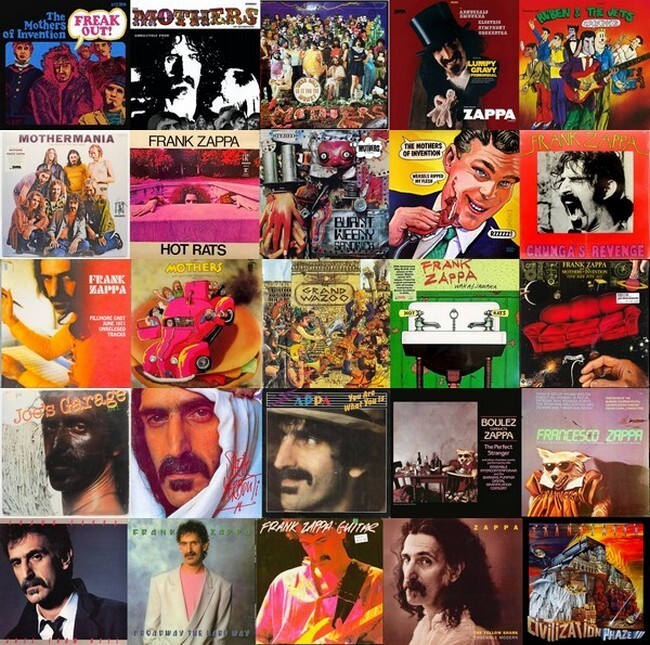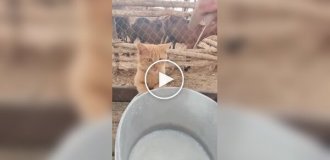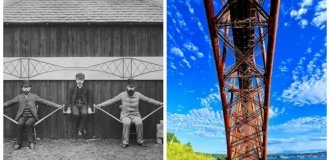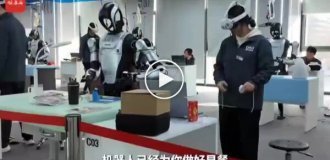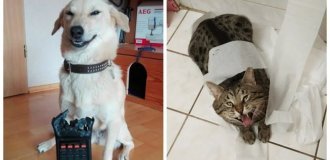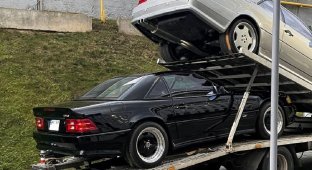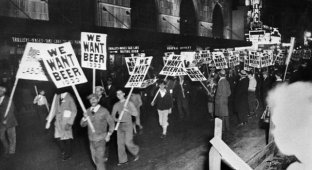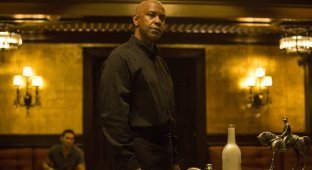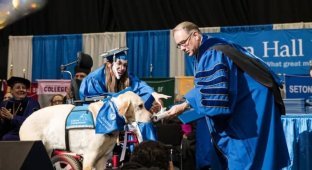California legend (63 photos + 11 videos)
Frank Zappa passed away 30 years ago 
American composer, experimental musician, producer, singer and songwriter, as well as sound and film director Frank Vincent Zappa was born in Baltimore (Maryland, USA) on December 21, 1940 in a family of European immigrants. His father Francesco Vincent Zappa was born in the Sicilian city of Partinico (Italy) and was of Greek-Lebanese descent. After immigrating, he received his education in the States and went to work at a defense plant in Florida. A diploma in mathematics and chemistry allowed him to take care of his wife, so the couple’s children (four in total) grew and matured without knowing adversity. Mother Rosa Maria Colymore was of 3/4 Italian and 1/4 French descent. She looked after the household, which was quite difficult, since frequent moves due to her father’s business trips made it difficult to establish a decent life. 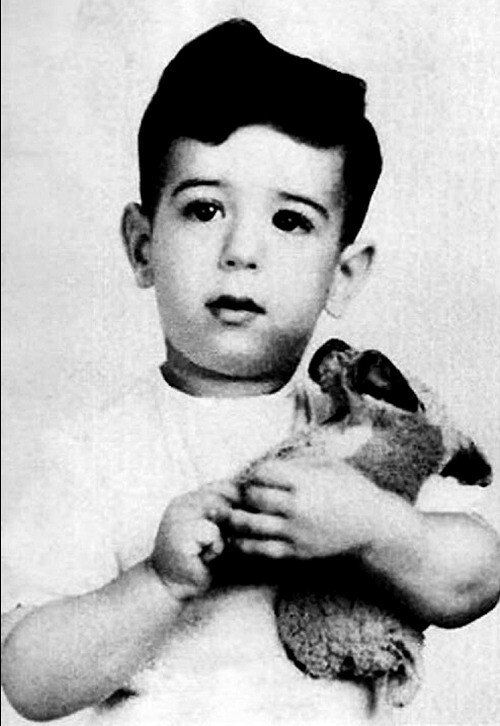
The family traveled across half of America, visiting many cities. After some time, they returned to Maryland, where his father worked at the Edgewood Chemical Plant (now the US Army Edgewood Chemical Biological Center), which was a facility of the Aberdeen Proving Ground. 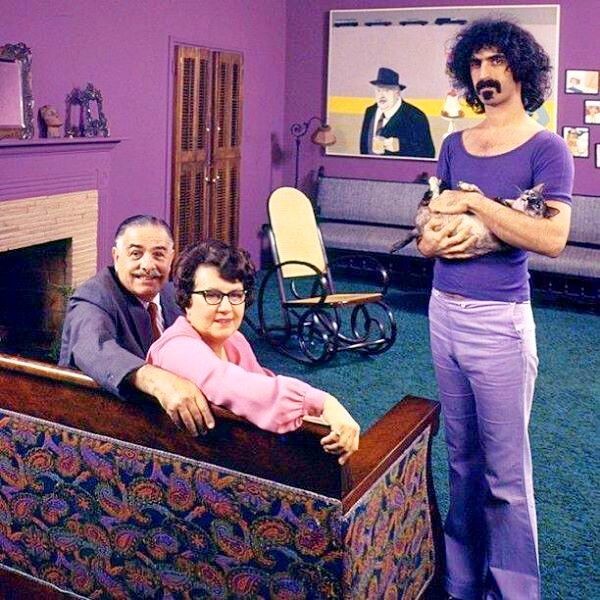
Frank with his parents
Frank, who was in poor health, did not tolerate climate change well - in childhood he developed upper respiratory tract diseases. He suffered from otitis media, sinusitis, seasonal colds and bronchial asthma, but despite this, he helped his parents in raising their younger children.
In 1952, due to Frank's health, the family moved to California, first to Monterey, where his father taught metallurgy at the Naval Academy. Then they moved again: to Claremont, then to El Cajon, until finally settling in San Diego.
Zappa's health was apparently also affected by the proximity to military training grounds, where secret chemical weapons tests were then carried out. Due to the proximity of arsenals with mustard gas, a supply of gas masks was constantly kept in the house (subsequently, compositions appeared in the musician’s work, where such images as “nose”, “dangerous microbe” and “gas mask” flashed).
The boy's early interests in music were influenced by the acquisition of a phonograph and a collection of rare recordings with the best songs of past years, which he kept until the end of his life. Frank was interested in the sounds of instruments themselves, especially the sounds of drums. At age 12, he acquired a snare drum and began learning the basics of orchestral percussion.
At Antelope Valley High School in San Diego, Zappa, having learned the depths of instrumental art, organized his own school rock band, in which he performed as a drummer, gaining considerable authority, and not only among his peers. 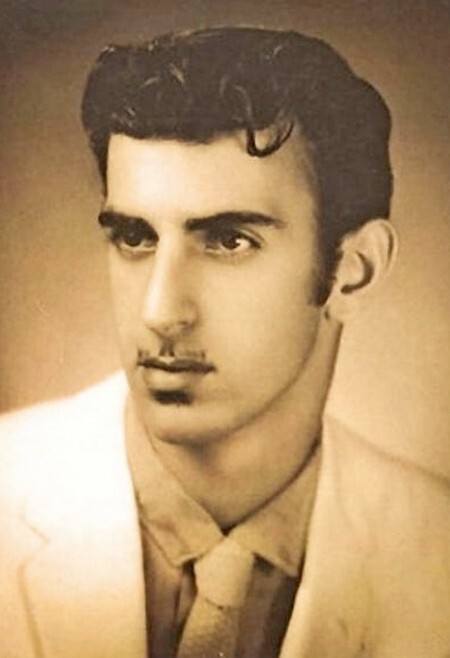
As the leader of the group, Frank worked diligently to develop his own style, taking cues from such avant-garde composers as Igor Stravinsky, Edgard Varese and Halim El-Dubh. He also listened to advanced underground bands, whose melodies turned on the audience moving in elite circles. He was fond of modern jazz and black rhythm and blues. He was involved in arranging, writing music and dreamed of becoming a composer. Zappa's interest in music composition and arranging was evident during his final years of school, when he said he was arranging and creating avant-garde pieces for the school orchestra.
In 1958, Frank graduated from high school (in 1966, as a sign of recognition, he placed portraits of 2 of his music teachers on the cover of the Freak Out!) album, after which, in 1959, the family moved to the Los Angeles area, where Frank and then lived most of his life. There he met Don Vliet (later known under the stage name Captain Beefheart), in whom he found a lifelong friend. The guys were creative and took the first steps towards popularity, demonstrating faith in the future and inexhaustible optimism. 
Zappa's yearbook photo, 1958 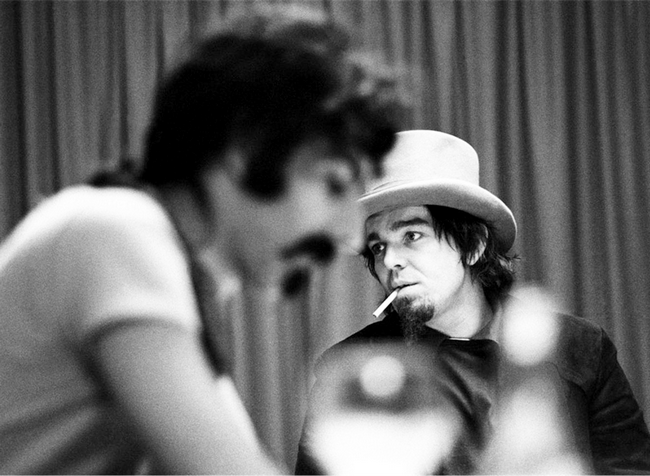
Frank Zappa & Captain Beefheart, 1969
At the beginning of his creative biography, Zappa played as a session musician and wrote soundtracks for films. Because of a composition written for an illegal porno, he came under arrestt, and was sentenced to 6 months in prison, but less than 10 days passed before he was released, admitting his non-involvement in the creation of the film itself. This short conclusion played a key role in shaping Frank's negative assessment of authoritarianism.
After his release, Zappa became a member of The Blackouts, where saxophonist James Sherwood was one of the leaders. At his suggestion, the already experienced drummer became interested in the sound of the electric guitar and in a short period of time mastered the instrument on his own. 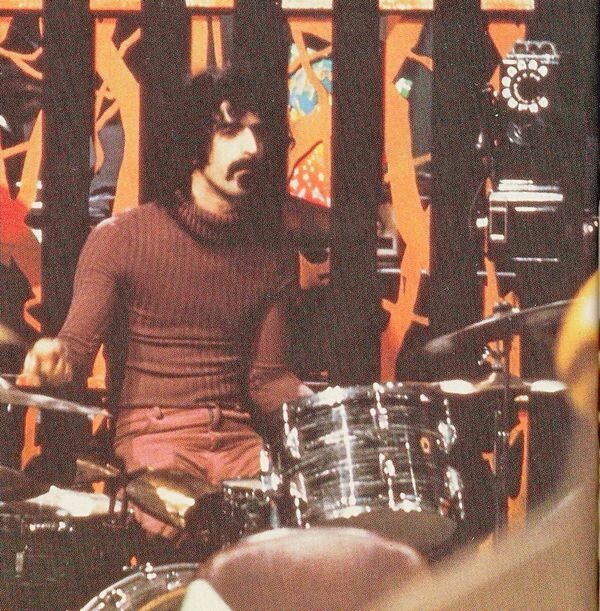
His guitar musical influences included Johnny Watson, Howlin' Wolf and Clarence Brown. Zappa compared playing lead guitar to "building aerial sculptures", and subsequently developed his own eclectic, innovative and improvisational style of playing the instrument. 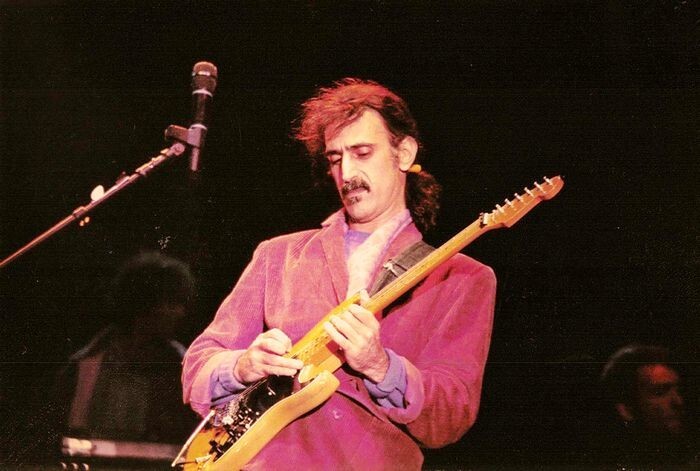
At the same time, Zappa, together with musicians Ray Collins (vocalist of The Soul Giants) and Paul Buff, wrote and recorded songs for local musicians, in particular, the song “Memories of El Monte” for the group The Penguins. Buff then owned a small recording studio, Pal, equipped with a 5-track tape recorder he made himself (at that time, few commercial studios had multi-track recording capabilities). 
At the end of 1960, Frank married Katherine Jay Sherman, but their marriage broke up after less than 4 years, long before the musician became famous. After separating from his wife, Zappa moved to Pal Studios, where he began working diligently, experimenting with overdubbing and splicing, 12 or more hours a day. The musician then used these techniques and their analogues throughout his career. Having received income from film compositions, Zappa rented a studio, which was now called “Studio Z”, however, things did not go well, and the contract was terminated. 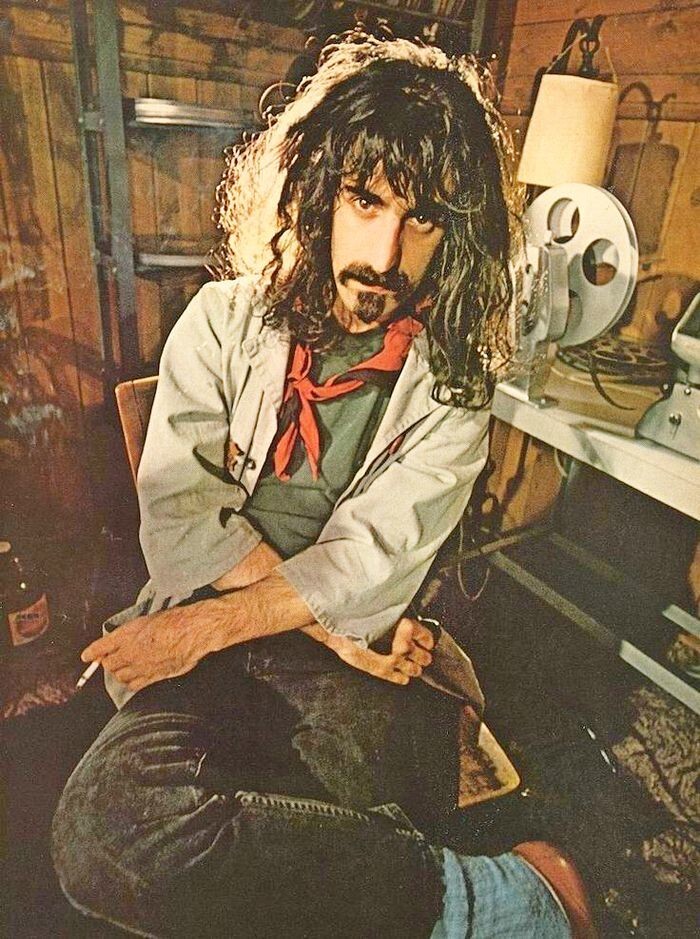
And in 1964, already as a guitarist, Frank joined the band The Soul Giants, and quickly became its leader, convincing the musicians to play his material. Then the band changed its name to The Mothers and received a contract with the Verve Records label, and at the insistence of the label changed the name to The Mothers of Inventions, because the word "mother" was considered a form of the expletive "motherfucker". 
The band's debut album in 1966 was “Freak Out!” It was a combination of rock and roll songs with various improvisations and studio sound effects. Zappa's subsequent albums also shared this eclectic and experimental approach, whether the primary genre was rock, jazz or classical. In his satirical lyrics, Frank criticized general education and religion, while at the same time defending freedom of speech, promoting self-education and participation in political life, and opposed censorship. 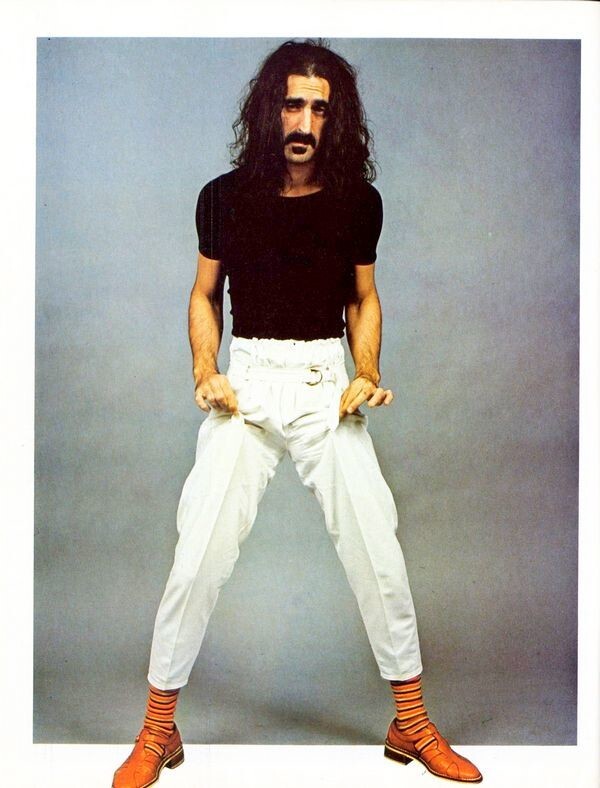
Zappa also worked briefly in the advertising business, which gave him valuable insight into how it worked, and as a result, throughout his subsequent career, he paid great attention to the visual presentation of his work, designed several of his album covers himself, and took part in creating video clips. 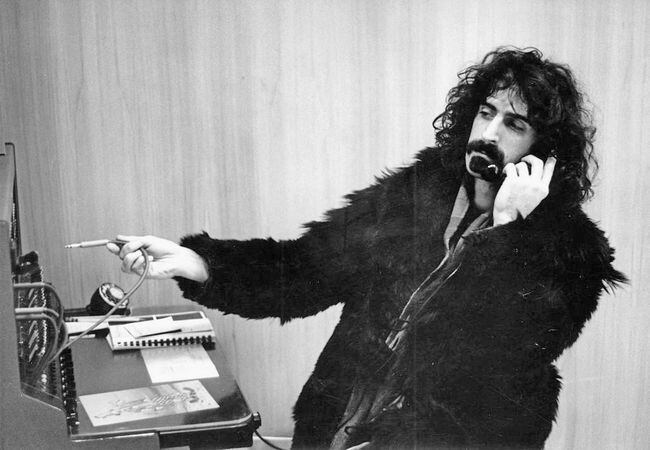
Then he made a living playing in various nightclubs with the band The Blackouts. In commercial terms, the most successful were the professional recordings made by Frank for two low-budget films “The World's Greatest Sinner” (dir. Timothy Carey, 1962) and “Run Home Slow” (dir. Ted Brenner, 1965). 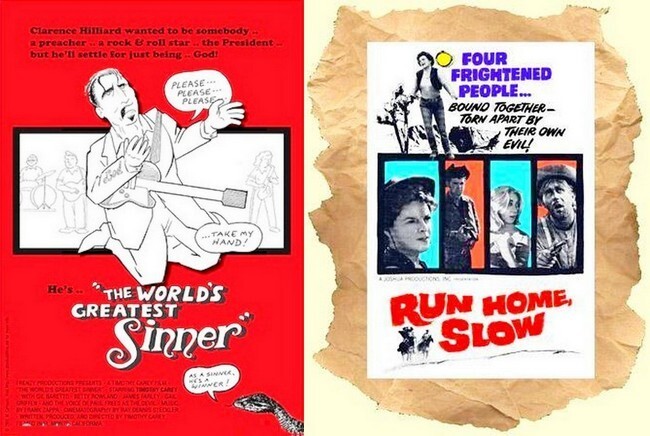
Having already experienced a painful breakup with Sherman, the musician met a new girlfriend, Adelaide Gail Sloatman, whom he married in 1967. Their marriage produced a daughter, Moon Unit (1967), a son, Ian Donald Calvin Euclid “Dweezil” (1969), a son, Ahmet Emuuha Rodan (1974), and a daughter, Diva Muffin (1979). Dvizil and Ahmet later became musicians, creating the rock band Z. Ahmet is currently also a trustee of the Zappa Family Foundation. Moon is an actress, and Diva is an artist. 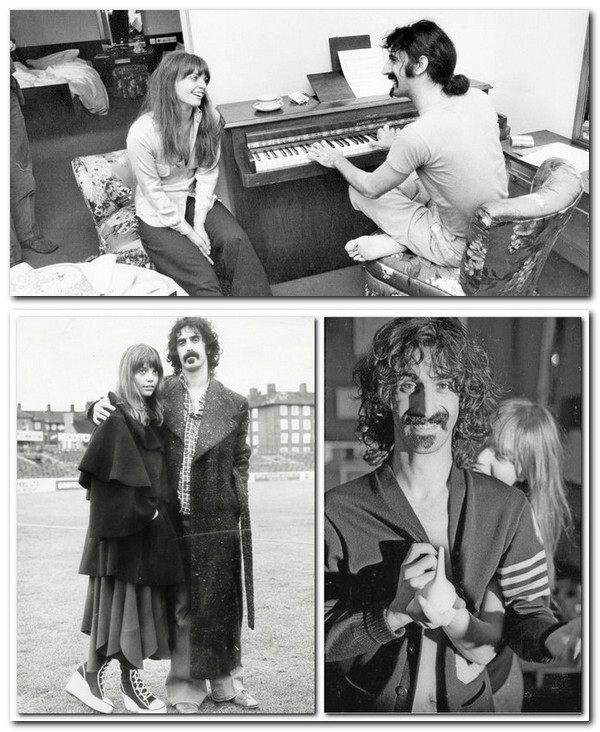
Frank and Gail Zappa 
The Zappa Family 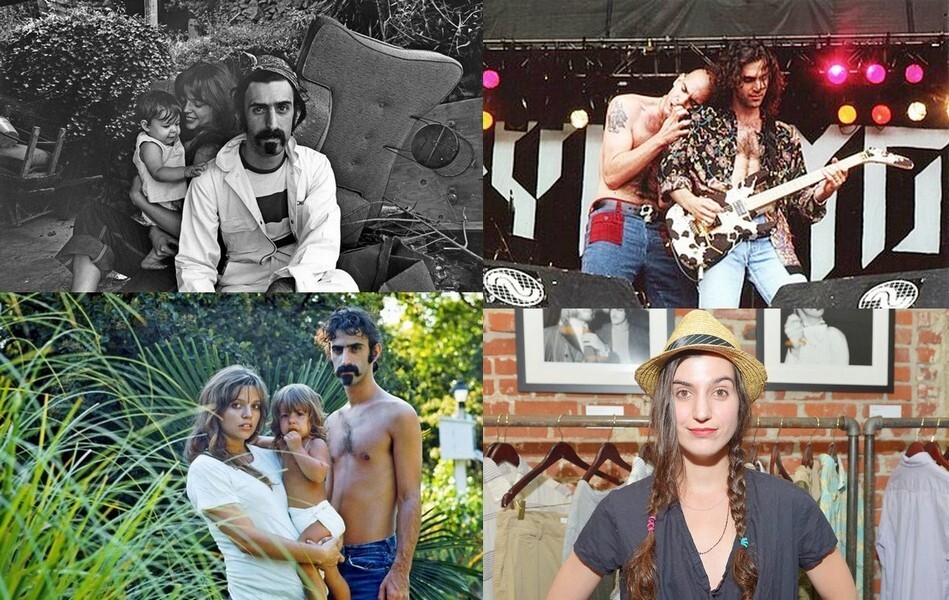
Zappa: Frank, his wife Gail and daughter Moon. Ahmet and Dweezil Zappa at a concert in 1993. Diva Zappa
Zappa, his wife and the band spent the period from the end of 1966 to 1968 in New York, with a break for the only European tour in their career. During this period, they gave a large series of concerts and recorded 3 albums: “We’re Only in It for the Money”, “Cruising with Ruben & the Jets” and “Uncle Meat”. The cover of “We’re Only in It for the Money” (a parody of the cover of The Beatles’ “Sgt. Pepper’s Lonely Hearts Club Band”) was created by illustrator Cal Schenkel, whom Frank met there in New York. This meeting began a lifelong collaboration during which Cal created covers for numerous albums by Zappa and his band. 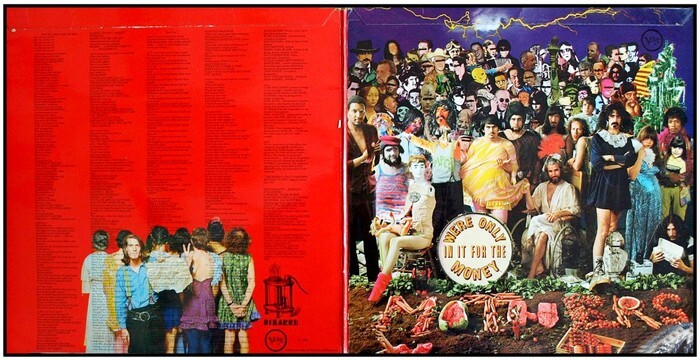
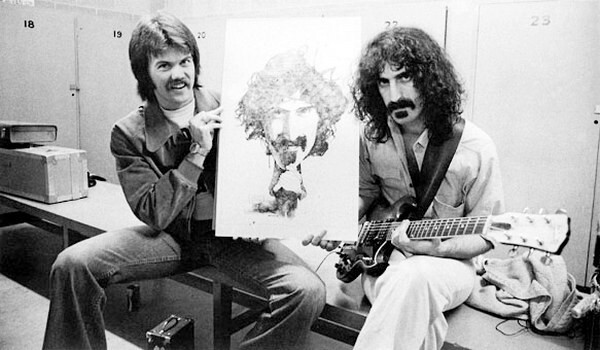
Cal and Frank
After the breakup of The Mothers of Inventions in 1969, Zappa released his most famous solo album, Hot Rats. Famous musicians took part in its recording: violinist Don "Sugarcane" Harris, drummers John Guerin and Paul Humphrey, multi-instrumentalist and former member of The Mothers of Invention Ian Underwood, bass guitarist Shaggy Otis, as well as Captain Beefheart, whose vocals were recorded for the only songs (“Willie the Pimp”). 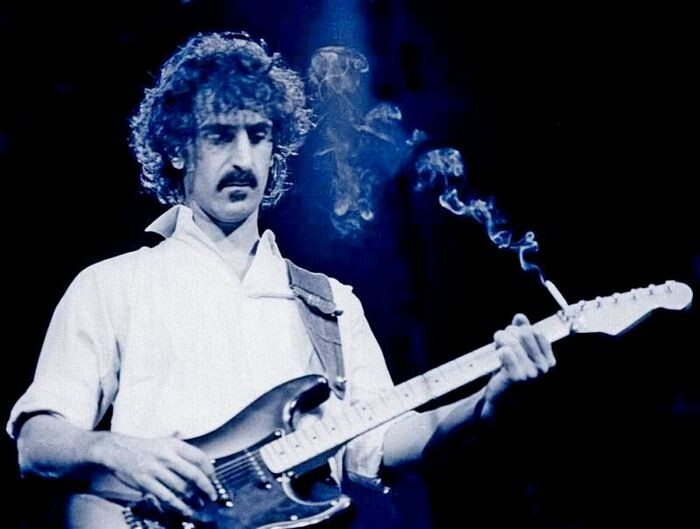
In addition, in 1969, Zappa produced Captain Beefheart's Trout Mask Replica and Alice Cooper's debut album.
In 1970, Zappa formed a new lineup of The Mothers, which included Underwood, drummer Ainsley Dunbar, keyboardist George Duke, bass and rhythm guitarist Jeff Simmons, as well as 3 members of The Turtles: bass guitarist Jim Pons and vocalists Mark Folman and Howard Kaylan. This lineup of The Mothers debuted on Zappa's next solo album, Chunga's Revenge, which was followed by a double album of soundtracks for the film 200 Motels (dir. F. Zappa, Tony Palmer, 1971). The filming also included The Mothers, Ringo Starr, Theodore Bikel, Keith Moon and the Royal Philharmonic Orchestra. 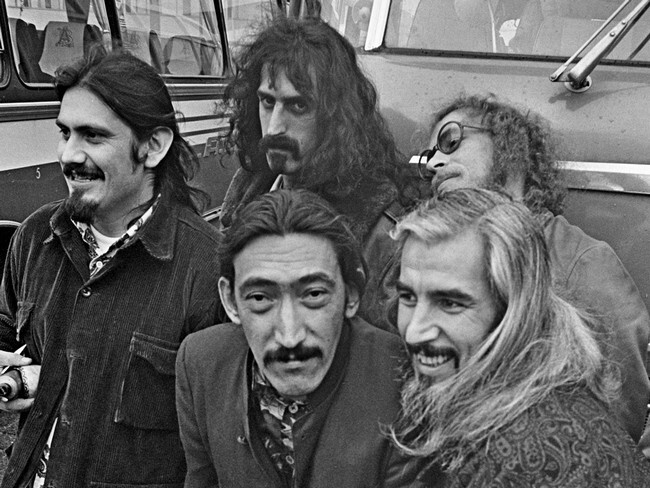
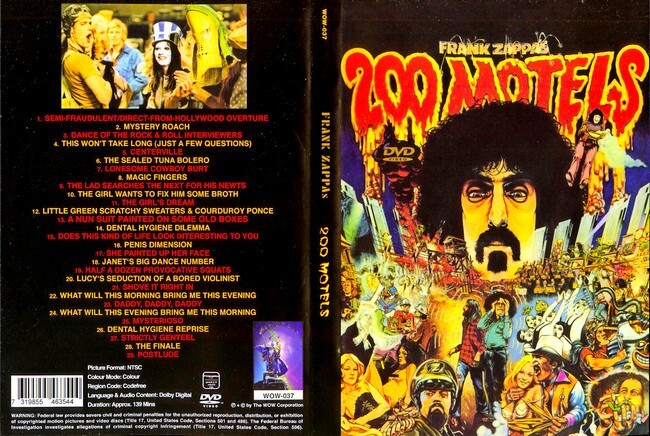
After the film's release, the band went on tour, which resulted in 2 live albums: "Fillmore East - June 1971" and "Just Another Band from L.A." One of the latter’s tracks was the 20-minute composition “Billy the Mountain” (a parody of one of the Californian rock operas).
With the new line-up of The Mothers, Frank also released a number of albums under the names "Frank Zappa & the Mothers of Inventions" and "Frank Zappa & the Mothers". 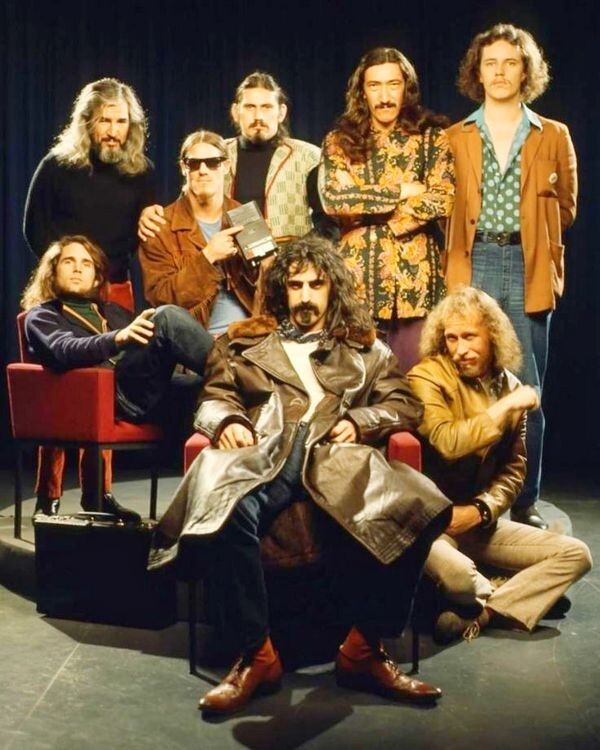
In 1971, Zappa took part in a concert performance by John Lennon and Yoko Ono, a fragment of which was later released on the Lennon double Some Time In New York City (1972). 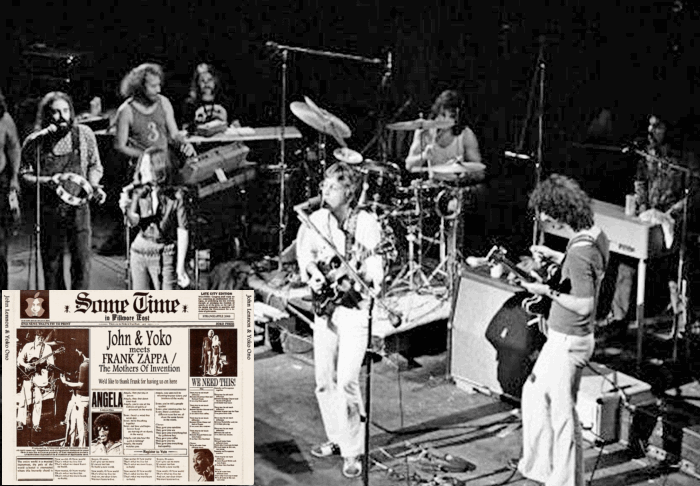
That same year, during a Frank Zappa & The Mothers concert in Montreux (Switzerland), a fire broke out, in which both the casino building in which the concert took place and the band’s equipment burned down. It is believed that one of their Swiss fans fired a flare, which caused the fire. This event is also notable for the fact that it was immortalized in the hit “Smoke on the Water” by Deep Purple, who were in the city that day, the lyrics of which were inspired by this fire and its smoke spreading over Lake Geneva. DP then came to Montreux to record a new album (“Machine Head”, 1972) and included a song that was written literally “hot on the heels” and became one of the most recognizable hits in the history of world rock music. 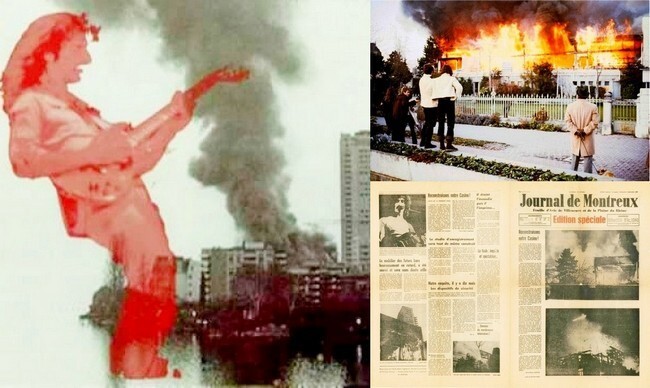
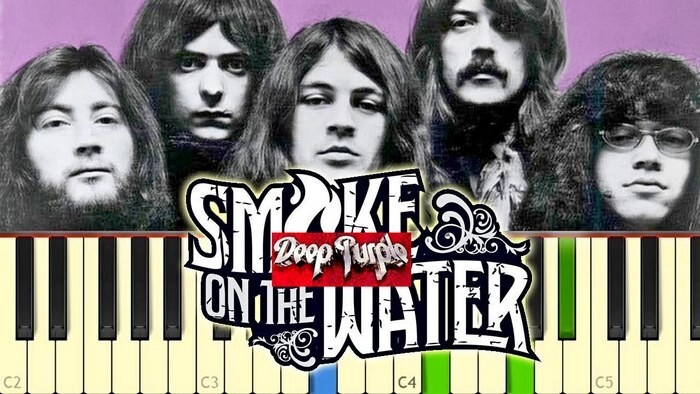
A week after the fire, the group performed at the Rainbow Theater in London, renting instruments and equipment for the performance. During the encore, one of the fans pushed Frank off the stage into the orchestra pit, as a result of which he received injuries to his head, back, legs and neck, damaged his larynx, which is why he ended up in a wheelchair for six months.  <br
<br
During the forced break, Zappa released 2 jazz solo records: “Waka/Jawaka” and “The Grand Wazoo”. While he was in a wheelchair, the members of The Mothers were in limbo and eventually formed the core of Flo & Eddie and went on their own tour.
Zappa, after the release of “Waka/Jawaka” and “The Grand Wazoo” and “returning from sick leave,” began touring with small groups in which Underwood, his wife, percussionist Ruth, trumpeter and vocalist Sal Marquez, saxophonist and vocalist Napoleon Murphy Brock, trombonist Bruce Fowler, bassist Tom Fowler, drummers Chester Thompson and Ralph Humphrey, keyboardist George Duke, and violinist Jean-Luc Ponty. During this time, the albums Over-Nite Sensation, Roxy & Elsewhere, One Size Fits All were released, as well as his solo album Apostrophe, which reached number 10 on the Billboard chart. 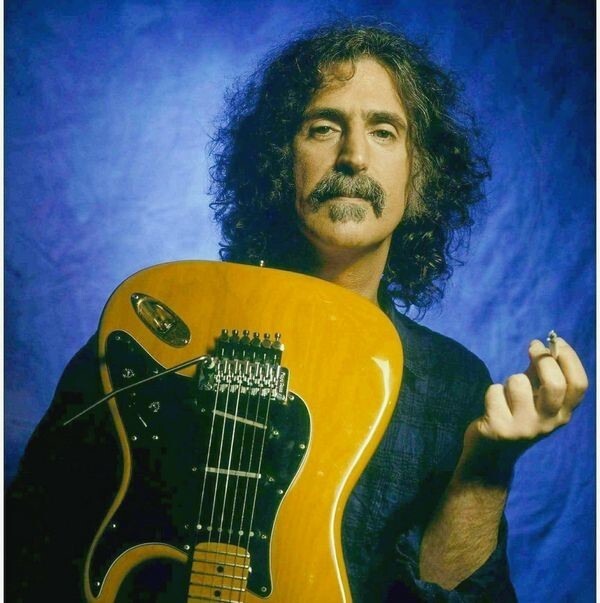
In 1975, Zappa released Bongo Fury, a compilation of live recordings from the tour. “Bongo Fury” was the last release signed as The Mothers, after which Frank began to call all his subsequent bands simply Zappa, and release albums under this name.
All 1970s and 1980s. Zappa was actively involved in creative activities. Thus, among the albums of that period, the double “Sheik Yerbouti” (1979, recorded in 1977-78) with the hit “Bobby Brown”, and the triple album “Joe’s Garage” (1979) stand out. And in 1980, young guitar virtuoso Steve Vai played in his group for some time, who later made a brilliant solo career. 
In a 1992 interview with Matt Groening, Frank said that it was unlikely that any of his other albums would sell better than "Sheik Yerbouti", due to the fact that the song "Bobby Brown" regularly hits various charts. It told about the ups and downs in the lives of young people. Denying accusations of insulting the feelings of representatives of the cultural community, the musician said that this track was a reflection of his creative ideas. 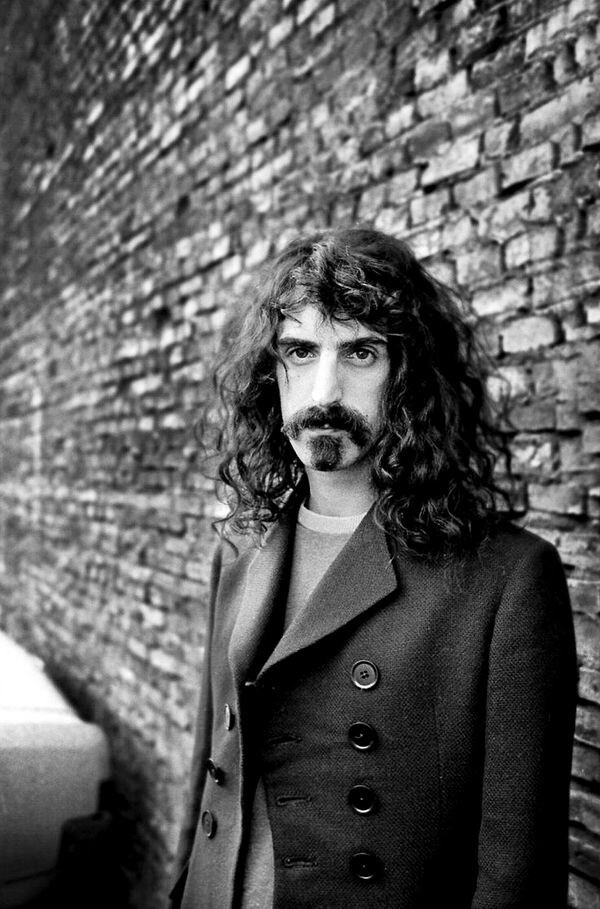
On December 21, 1979, Zappa's film Baby Snakes, dedicated to "people who do crazy things," premiered in New York. The nearly 3-hour film consisted of footage from a 1977 New York concert featuring keyboardist Tommy Mars, percussionist Ed Mann and guitarist Adrian Belew. The film also contained unusual sequences with claymation animation by Bruce Bickford, previously presented on TV in 1974 (later made available on the video clip "The Dub Room Special", 1982). The film was not released, but won the Grand Prix at the First International Music Festival in Paris/Fête de la Musique in 1981 (The Zappa Family Trust did release the film on DVD, but it became available only in 2003). 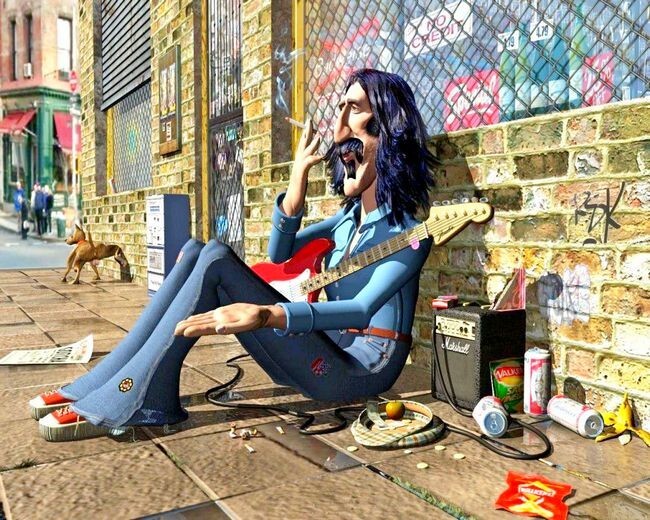
In the spring of 1982, the single "Valley Girl" (on which Moon Zappa sang) was nominated for a Grammy Lifetime Achievement Award and reached high positions in the Billboard weekly rankings. A new manner appeared in him, not characteristic of Frank, and at first it was condemned and not accepted by the interested people. 
The disappointed musician then turned to academic genres - he presented listeners with an exclusive classical program. Through a series of concerts with the London Symphony Orchestra, Zappa joined the classical masters as a guitarist. 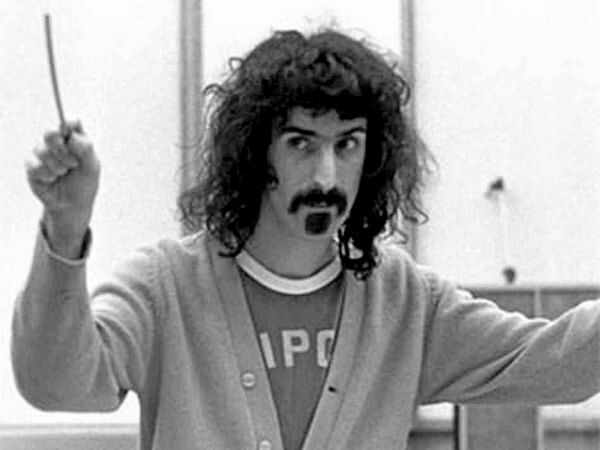
In the 1980s the musician became intensely interested in politics. He inspired fans with his album covers to vote, and throughout 1988, he had registration booths at his concerts. Frank was even considered as a candidate for the presidency of the United States (in 1991, he nevertheless put forward his candidacy, but was then forced to withdraw due to illness). 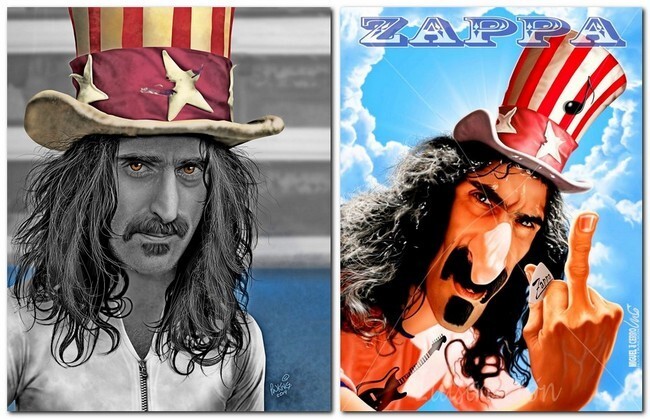
At the same time, along with recordings and concerts, he got involved in the music business, and in order to establish international connections, he traveled to the USSR. The musician met with producers, drummers, singers and guitarists (including Stas Namin and Alfred Schnittke), pushing other American figures to action. 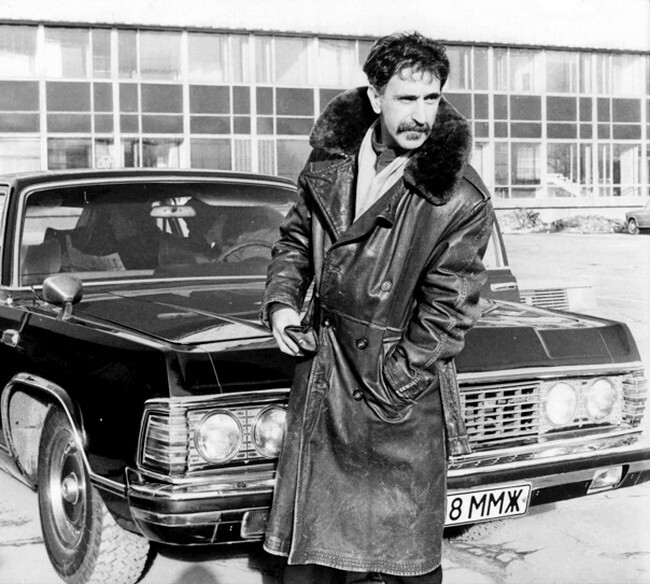
"To methen my mother’s friend Alfred Schnittke, whom we had known since the 1970s, called and asked to introduce him to Frank.
He came to see me at the Green Theater, and we sat in Victoria, the first private restaurant in Moscow that I opened there. I translated for them, since Schnittke did not know English, and Zappa did not know German, which Alfred spoke fluently.
Schnittke and Zappa, and I translate. We sat like that for an hour and a half, they talked mainly about music: Alfred asked, Frank answered. For example, how to write 1/32 tones on sheet music and the like.
One answer from Frank particularly surprised me - the depth and encyclopedic nature of his knowledge. Schnittke asked, “Where is the minor pentatonic scale in world music?” and Zappa replied: in southeastern Japan. I translate and think: this is a historical conversation between two geniuses” (from an interview with S. Namin to the MK portal, 2021). 
Stas Namin and Frank Zappa in the SNC Records studio
In the last years of his life, Zappa worked with an electro-musical instrument called the Synclavier - an early digital synthesizer - releasing the studio albums "Thing-Fish" (a 3-disc collection in the style of Broadway plays that addressed the dystopian "what if" while incorporating feminism , homosexuality, the spread of AIDS, and eugenics carried out by the US government) and "Them or Us" - a 2-disc, heavily edited collection of live and session recordings. The new concept of creativity, despite the deviation from the origins, attracted the attention of critics to the musician and received the approval of the masses. 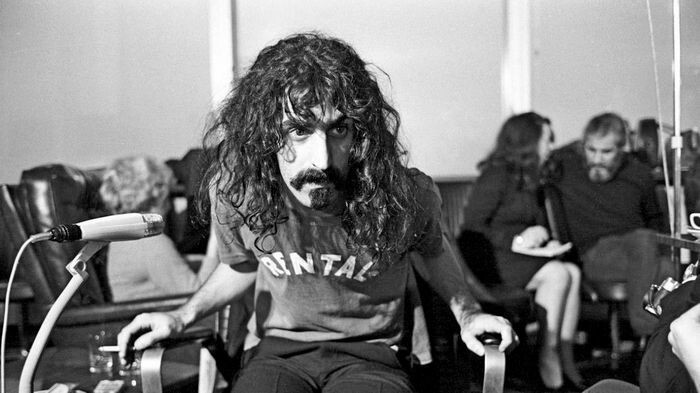
Given the complexity of the music, Frank performed almost everything he could think of on the Synclavier. It could be programmed to play any tune. Thanks to the new instrument, the musician realized that he no longer needed help. 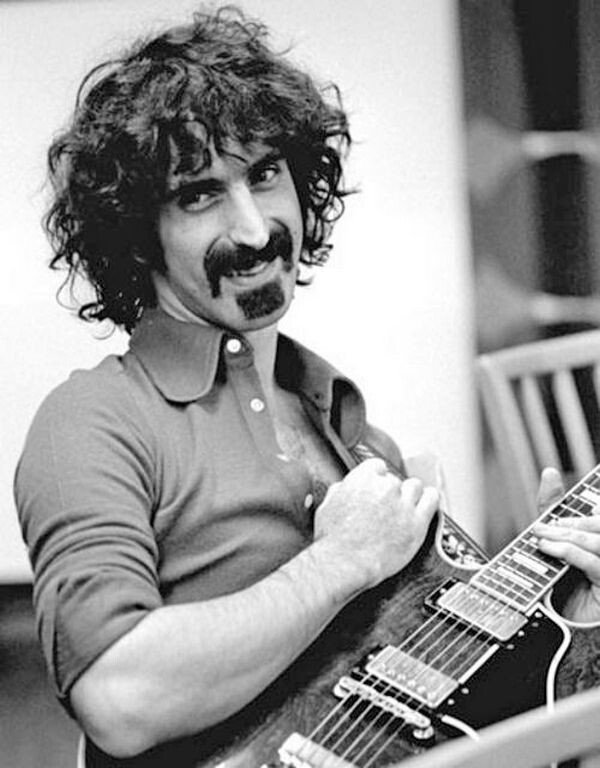
In 1984, Zappa released two more albums: “Boulez Conducts Zappa: The Perfect Stranger,” containing compositions written with the participation of the chamber orchestra Ensemble Intercontemporain under the direction of the famous conductor Pierre Boulez (whose activities also influenced the creation of the album “Freak Out! ") and performed live in combination with the Synclavier, and "Francesco Zappa", which was a performance on the Synclavier of works by the 18th century composer Francesco Zappa (who has nothing to do with Frank's family). 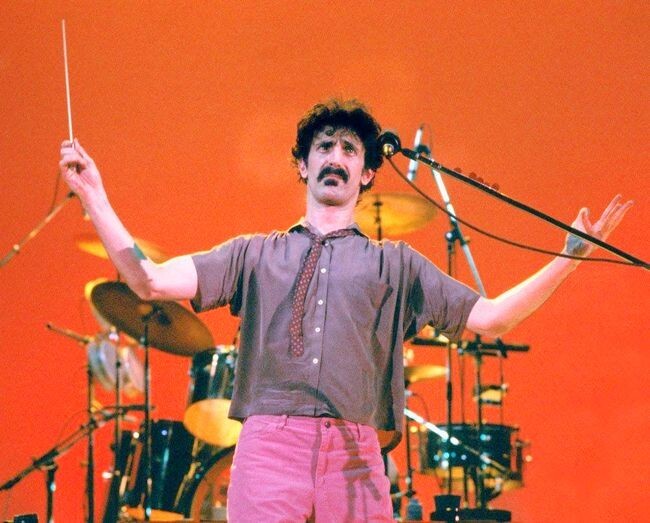
And on September 19, 1985, Zappa testified before the US Senate Commerce and Technology Committee, criticizing the activities of the public organization Parents Music Resource Center, created to “resolve controversial issues regarding sexist and satanic content in song lyrics.” It consisted mainly of the wives of politicians, including representatives of 5 members of the committee. Frank understood that the PMRC's activities were a direct path to censorship, so in his speech he called the committee's proposal for voluntary labeling of recordings with explicit content "extortion" from the music industry. 
The musician’s last tour in the jazz-rock format took place in 1988 with 12 members of the group, whose repertoire consisted of more than 100 compositions, but was canceled before its completion due to Frank’s worsening health problems. Recordings from the tour were included on the albums Broadway the Hard Way (containing songs with a strong political focus), The Best Band You Never Heard in Your Life (Zappa standards, and an eclectic collection of cover versions of famous songs ranging from " Boléro" by Maurice Ravel and ending with "Stairway to Heaven" by the British Led Zeppelin, adding notes of individuality) and "Make a Jazz Noise Here" (instrumental and avant-garde music). 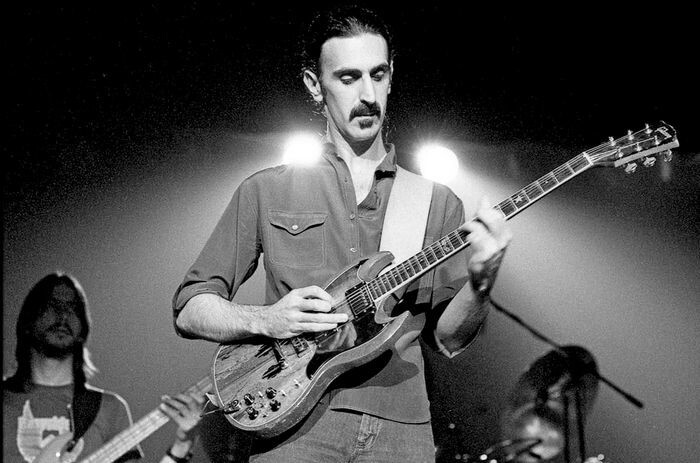
And in early 1990, Zappa, at the request of President Vaclav Havel, visited Czechoslovakia as a consultant on trade, culture and tourism. Havel was a fan of Frank, whose work had a great influence on the avant-garde and underground music of Central Europe in the 1970s and 80s. (Czech rock band The Plastic People of the Universe were named after Zappa's song "Plastic People" (1967)). The musician accepted the invitation and began meeting with officials interested in investments in the Czech Republic. However, after several weeks, the administrationThe US put pressure on the Czech government to remove Zappa from his post. Instead of complying with the demand, Havel appointed Frank as an unofficial cultural attaché. The musician planned to create international businesses to facilitate trade between former Eastern Bloc countries and Western companies. And on June 24, 1991, he took part in the concert “Adieu Soviet Army”/ “Farewell, Soviet Army”, organized in Prague in honor of farewell to the last Soviet soldiers, i.e. withdrawal of the contingent of the Central Group of Forces (CGV) of the SA from Czechoslovakia. This may have been Frank's last performance on stage, a recording of which later appeared on the album "Adieu C.A." 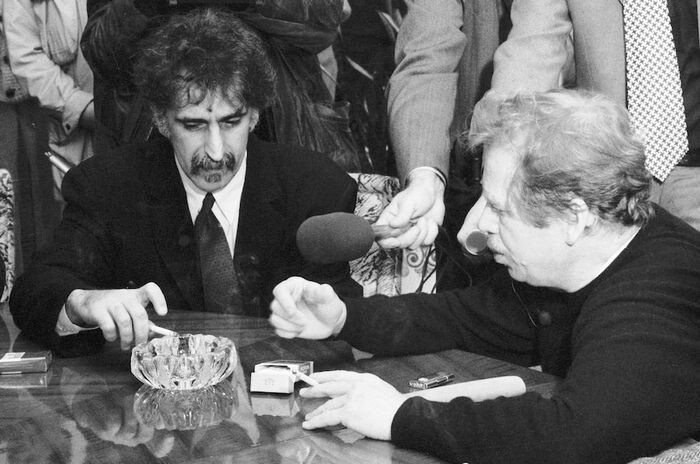
Frank Zappa and Vaclav Havel, Prague, 1991
In 1991, the musician was diagnosed with terminal cancer. After this, Zappa spent almost all his energy working for the Synclavier and modern orchestras. So in 1992, he acted as conductor of the German chamber orchestra of contemporary music Ensemble Modern, which performed his works. This recording was released on the album "The Yellow Shark" (1993). Then, in 1993, he completed another major work for the Synclavier, begun back in the 1980s. — album “Civilization, Phase III”. 
Frank Vincent Zappa died on the morning of December 4, 1993, surrounded by his family in Los Angeles, 2.5 weeks before his 53rd birthday from prostate cancer. The musician was buried in an unmarked grave in Los Angeles' Pierce Bros Westwood Village memorial park, next to which the same unmarked grave of musician and singer Roy Orbison appeared a little later. And if Orbison's son, Alex, told Reuters in 2010: “It wasn't intentional. We were not at all against people coming to our father’s grave. There was just a plan to move the grave, but that’s how it remained. At first we just had to come to terms with what happened, then everything dragged on. To this day we haven’t given up the idea of moving the grave.” As for Zappa, no one knows for sure why there is nothing written on his grave. Some of his fans say that this decision was made because the musician’s family was afraid that vandals would ruin it, while others are sure that it was all because Frank himself did not care at all that anyone remembered him. 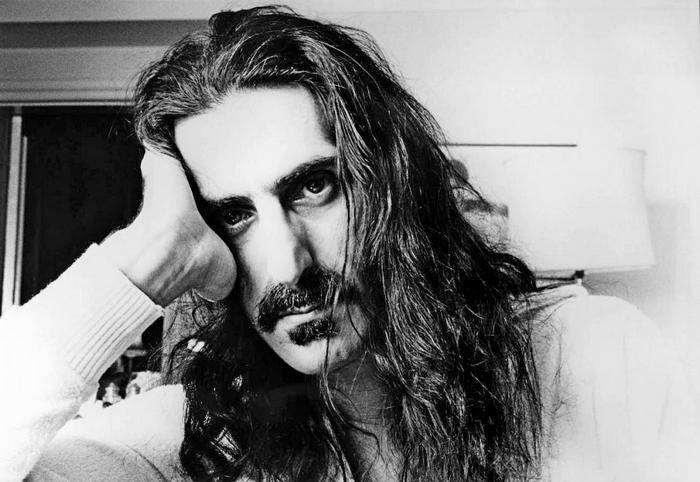

The musician’s family spoke out: “He’s just on tour, working out an engagement.” This episode is mentioned in the film “Without Questions: Frank Zappa about Himself”/ Eat That Question: Frank Zappa in His Own Words (France, Germany, 2016) directed by Thorsten Schutte, who presented the audience with documentary footage from concerts and memories of Frank’s colleagues and relatives . 
Over the course of his 33-year musical career, Zappa proved himself to be one of the most prolific composers of his era, releasing more than 60 albums, almost all of which contained unique compositions. He was also a talented engineer and producer with an encyclopedic knowledge of studio technology, producing almost all of his recordings himself. He worked in many genres and wrote music for rock bands, jazz ensembles, and symphony orchestras. Frank’s works, although infrequent, still had commercial success (the disc “Apostrophe” (1974) even went “gold”). 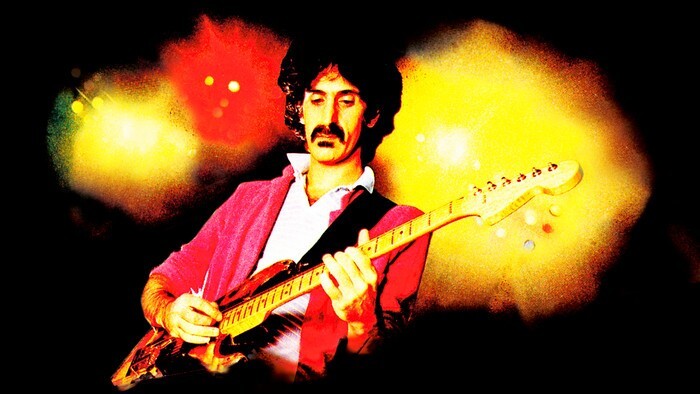
He made a great contribution to the development of music, was awarded a number of awards, was included in the Rock and Roll Hall of Fame (Cleveland, Ohio, USA) and the worldwide classical hit parade. 
Zappa's music is currently actively performed live by both tribute bands and a group called Zappa Plays Zappa, which is managed by his son Dweezil with the participation of former musicians from his father's band.
After Frank's death, his wife founded the musician's memory fund, The Zappa Family Trust, and continued to release albums and collections of his early and later hits. And after her death in 2015, the heirs, who continued the work and headed the organization, introduced a new generation of listeners to their father’s work. 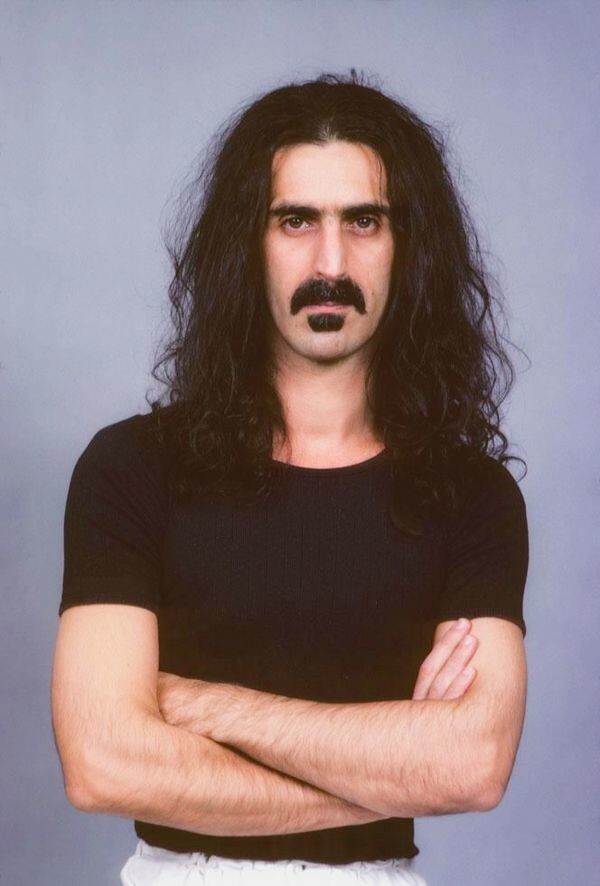
In addition to his extensive discography, the musician released The Real Frank Zappa Book (co-authored with Peter Occhiogrosco, 1989), his quotes and aphorisms given in it became popular and “flew away” among the people. 
A number of famous musicians, bands and orchestras of various genres have been influenced by Zappa's music. Rock musicians Alice Cooper, Primus, Phi Waybil (The Tubes) have acknowledged his influence on their work, as have Henry Cow, Trey Anastasio (Phish) and John Frusciante. Hard and metal acts Black Sabbath, Warren Demartini, Steve Vai, Strapping Young Lad, System of a Down, Clawfinger and Devin Townsend drew inspiration from Zappa. Classical music exponents Thomas Ulrich, Meridian Arts Ensemble, Ensemble Ambrosius and Fireworks Ensemble also acknowledge Zappa's influence and regularly perform his works. Other artists whose work was inspired by the musician's work included New Age pianist George Winston, composer Bob Gluck, parodist and comedian "Weird Al" Yankovic, industrial pioneer Genesis P-Orridge and noise artist Akita Masami of Merzbow. 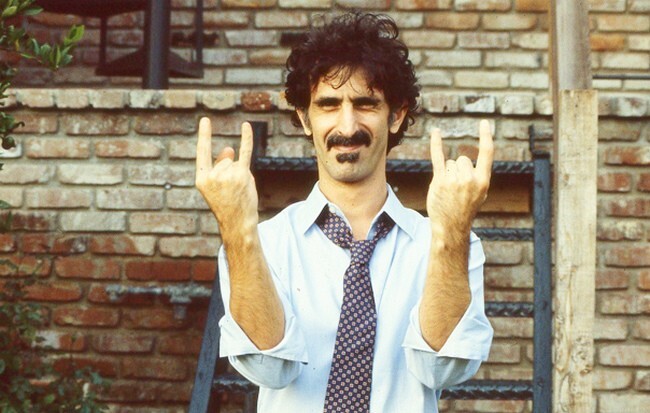
In 1992, at the Frankfurt Music Festival, Zappa was chosen as one of the 4 major composers of the era (the other 3 being John Cage, Karlheinz Stockhausen and Alexander Kneifel).
Guitar Player magazine dedicated a special issue to Zappa, the cover of which asked: “Was Frank Zappa America's best keeper of musical secrets?” Editor Don Mann noted that the issue is about "the most important composer to emerge from contemporary popular music." 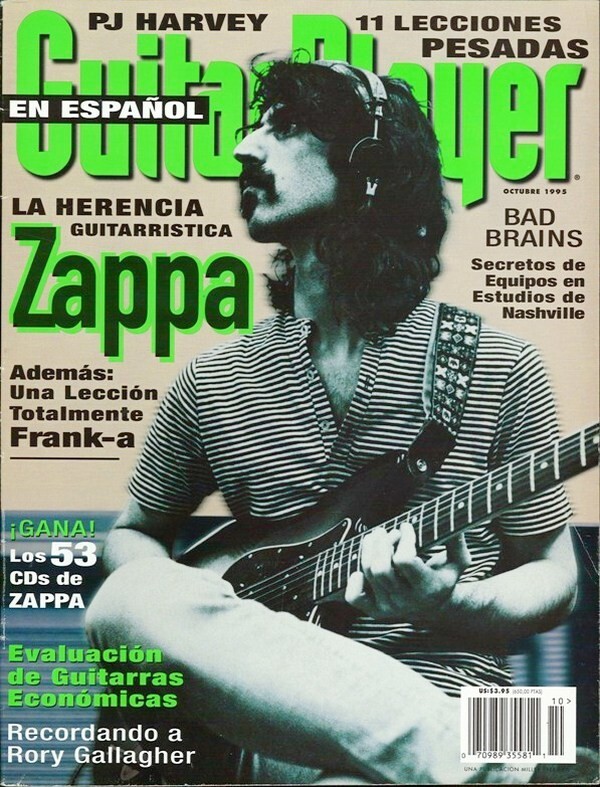
In 2009, producer Neil Slaven's biographical book Frank Zappa was published. Electric Don Quixote" is a little dry, but rich in facts, containing many interesting and funny stories and details that were not revealed in the "Real Book". 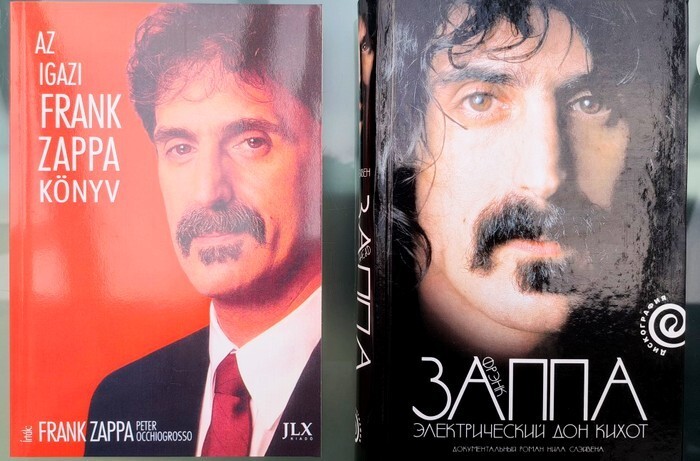
And on July 28, 2020, the premiere of the film “Zappa” took place (USA, UK, directed by Alex Winter) - a 2-hour film about the life, career and views of the musician, including many archival videos and interviews, stories from acquaintances, colleagues and family members . 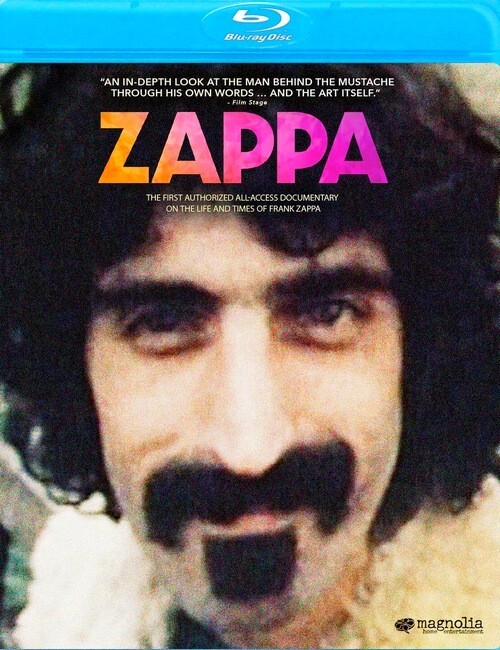
Scientists from various fields of science also paid tribute to the memory of the musician, naming their discoveries in his honor:
So in 1967, paleontologist Leo Plas Jr. discovered an extinct mollusk in Nevada, and gave it the Latin name "Amaurotoma zappa", stating: "the name of the species is a tribute to Frank Zappa."
In 1980, biologist Ed Murdy gave the name "Zappa" to the genus of New Guinea gobies, as well as the entire species "Zappa confluentus".
In 1987, biologist Ferdinando Boero gave the name "Phialella zappai" to California jellyfish, noting that he was "pleased to name a new species in honor of the famous composer."
In the early 1980s. In Cameroon, Belgian biologists Bosman and Bosselier discovered a spider, which in 1994 was given the name "Pachygnatha zappa", noting that on the "ventral side of the abdomen of the female of this species the pattern is strikingly reminiscent of the mustache of the legendary artist." 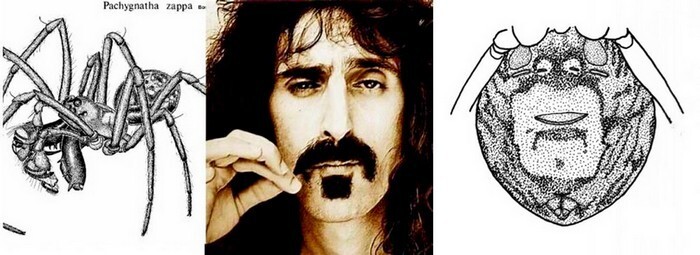
In 1995, 3 biologists from Maryland named the gene of the bacterium that causes genitourinary infections “Proteus mirabilis” in honor of Zappa. At the end of their scientific article, they thanked the musician “for his inspiration and assistance to genetic nomenclature.”
At the end of the 1990s. American paleontologists Mark Salak and Halard Lescinski discovered a multicellular fossil they named "Spygori zappania", in honor of "Frank Zappa...whose mission was similar to that of the early paleontologists: to challenge conventional and traditional beliefs that lacked logical and rational roots."
In 1994, the efforts of physicist John Scialli led the Minor Planet Center (MPC), under the auspices of the International Astronomical Union (IAU), to name asteroid 3834 Zappafrank in honor of Zappa. He was discovered in 1980 by Czechoslovakian astronomer Ladislav Brozek, who commented: “Zappa was an eclectic composer and self-taught artist... Until 1989, he was considered a symbol of democracy and freedom in Czechoslovakia.”
Also, in 1995, a bust of Zappa, created by sculptor Konstantinas Bogdanas, was installed in Vilnius (Lithuania). In 2008, an exact copy of the Lithuanian sculpture was proposed to be installed in Baltimore (Maryland, USA), and on September 19, 2010, in honor of the 25th anniversary of Zappa’s testimony in the US Senate, the bust was erected near the Southeast Library. During its installation, presenceGail Zappa and city mayor Stephanie Rawlings-Blake attended. 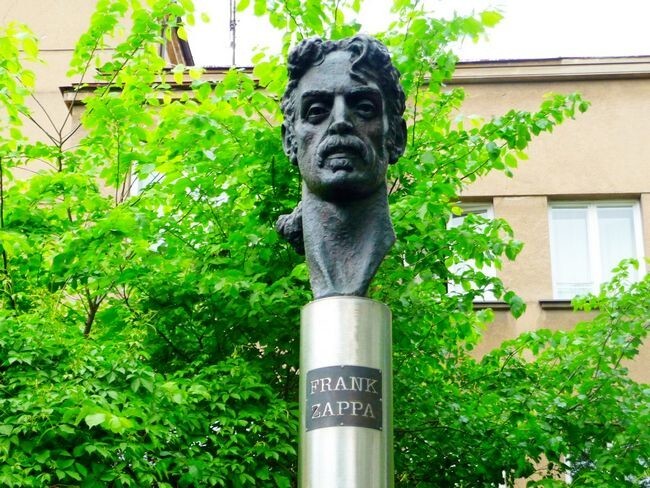
Bust of Frank Zappa in Vilnius
In 2002, a bronze bust of the musician was installed in Bad Doberan, Germany (Mecklenburg), and since 1990 the annual music festival “Zappanale” has been held there. 
Bust of Frank Zappa created by Vaclav Cezak in Bad Doberan
On the initiative of the ORWOhaus community of musicians, in 2007 in the Berlin district of Marzahn a street was named after Zappa - Frank-Zappa-Straße. 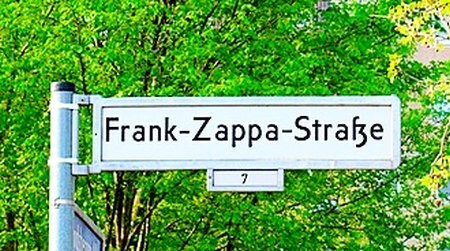
That same year, new Baltimore mayor Sheila Dixon officially declared August 9 "Frank Zappa Day", citing "Zappa's musical achievements as well as his service in defending the First Amendment." 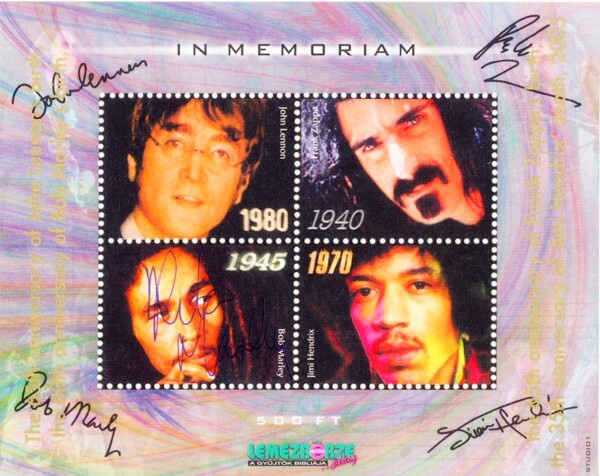
Zappa is the one who is credited with the authorship of the phrase “Talking about music is like dancing about architecture.” 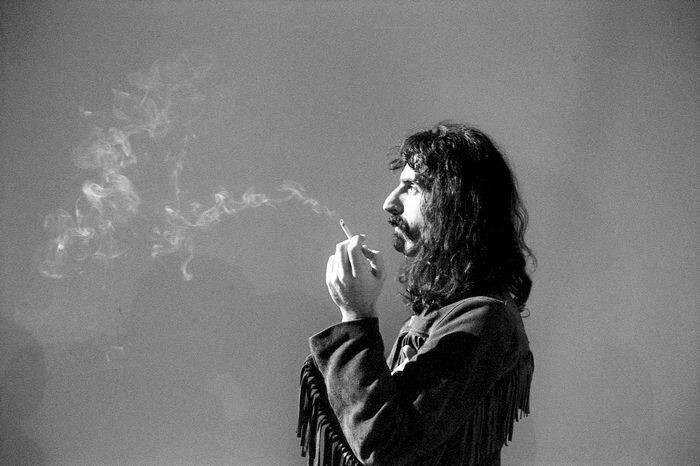
“Frank Zappa virtually straddled all genres of music, whether he was a satirical rocker, a jazz fusion artist, a guitar virtuoso, an electronic wizard or an orchestral innovator, his eccentric genius was undeniable.” (Dave Marsh, John Swanson, from the book "The Rolling Stone Album Guide" - a collection of professional music reviews from Rolling Stone magazine, 1979). 
Discography of F. Zappa:
"Freak Out!" (1966), "Absolutely Free" (1967), "We're Only in It for the Money" (1968), "Lumpy Gravy" (1968), "Cruising With Ruben & The Jets" (1968), "Uncle Meat" (1969), Mothermania (1969), Hot Rats (1969), Burnt Weeny Sandwich (1970), Weasels Ripped My Flesh (1970), Chunga's Revenge (1970), Fillmore East - June 1971" (1971), "200 Motels" (1971), "Just Another Band From LA" (1972), "The Grand Wazoo" (1972), "Waka/Jawaka" (1972), "Over-N" (1973), "One Size Fits All" (l1975), "Joe's Garage" (1979), "Sheik Yerbouti" (1979), "You Are What You Is" (1981), "Them or Us" (1984), "Boulez Conducts Zappa: The Perfect Stranger" (1984), "Francesco Zappa" (1984), "Jazz from Hell" (1986), "Broadway the Hard Way" (1988), "Guitar" (1988), "The Yellow" Shark" (1993), "Civilization, Phase III" (1993). 